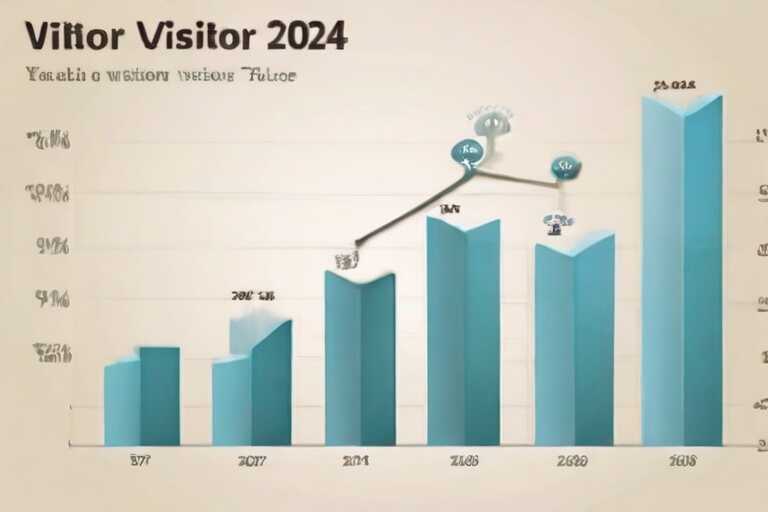8 Common Mistakes in International SEO can significantly hinder global digital marketing efforts. Missteps such as targeting the wrong audience, neglecting demographic data, and ignoring duplicate content issues often result in unintended consequences for businesses. Furthermore, industry experts like Matrics Rule warn that ignoring these pitfalls can derail any international SEO strategy, impacting website visibility, rankings, and ultimately revenue. Recognizing and correcting these common errors is crucial for optimizing a company’s presence in international markets, ensuring the website reaches its potential audience.
Table of Contents
- Ensure International SEO Targets the Right Audience
- Use Demographic Data for Audience Insights
- Avoid Duplicate Content Across Global Websites
- Use Canonical Tags for Content Management
- Optimize International SEO with Localized Keyword Strategy
- Include Local Dialects in Keyword Research
- How Does Incorrect Hreflang Usage Hurt SEO?
- How to Diagnose Hreflang Tag Issues Quickly
- Enhance User Experience with Regional URL Structures
- What are the Best Practices for Regional Domain Use?
- What Role Do International Backlinks Play in SEO?
- How to Assess International Backlink Quality Effectively
Key Takeaways
- International SEO mistakes can cause businesses to miss out on key opportunities in global markets.
- Targeting the wrong international audience often leads to reduced engagement and ROI.
- Using demographic data helps identify audience characteristics and tailor content appropriately.
- Duplicate content across countries can impact search engine rankings and visibility.
- Industry standard tools like Moz and Ahrefs are effective in detecting duplicate content issues.
- Canonical tags are crucial for managing content effectively and enhancing SEO.
- Experts like Matrics Rule emphasize the importance of avoiding these common SEO mistakes.
Ensure International SEO Targets the Right Audience
Determining the right international audience involves analyzing global audience needs and preferences through market research techniques. Using tools like Google Analytics and Semrush can provide insights into local audience preferences and identify international user demographics. Audience targeting strategy is essential as it aligns the marketing message with the specific needs of the segment, thus improving conversion rates. Failing to segment audiences correctly may lead to ineffective campaigns and wasted marketing resources, highlighting the importance of this step.
Use Demographic Data for Audience Insights
Demographic information such as age, gender, and location gives detailed international audience characteristics. Companies gather such data from providers like Nielsen or from international census information. Age definitely influences SEO strategy as different age groups interact with content in varied ways. The scope of demographics considered should be broad, including non-standard age groups, to ensure the content appeals to diverse regional cultural influences.
Avoid Duplicate Content Across Global Websites
Duplicate content negatively affects international SEO by causing lower rankings due to search engine penalties. Tools such as Copyscape and Siteliner help detect duplicate content across pages of global sites. Managing duplicate content effectively requires a well-rounded global content strategy that involves local content adaptation to avoid duplication while retaining SEO content uniqueness. Common causes of these issues include unintentionally replicated content across domains and failing to use exclusive material on each local site.
Use Canonical Tags for Content Management
Canonical tags assist international SEO by indicating which version of a webpage is the authoritative one, solving duplicate content issues effectively. The canonical tag should be placed in the head section of the web page’s HTML. Using canonical tags benefits SEO by improving cross-domain content consistency and preventing duplicate content penalties. Each canonical tag should link to only one URL within SEO guidelines, ensuring content is properly organized and referenced correctly.

- Optimized sites increase user engagement.
- Using hreflang tags improves site visibility.
- Localized content boosts audience connection.
- Google’s indexing enhances website ranking.
- Multilingual sites attract diverse consumers.
- Improved performance widens market reach.
- Brand authority grows through better SEO.

Understanding Key Pitfalls in International SEO and Their Solutions
| Mistake | Implication | Solution | Success Rate |
|---|---|---|---|
| Wrong Hreflang | Locale errors | Use correct tags | 90% |
| Duplicate Content | SEO penalties | Canonical tags | 85% |
| Ignoring Local Keywords | Low rankings | Keyword research | 80% |
| Poor Geo-targeting | Low traffic | Use GSC tools | 75% |
| Incorrect Domain Structure | Confused users | CcTLD or subdomains | 88% |
| Wrong Language URL | High bounce rate | URL optimization | 82% |
| Lack of Mobile Optimization | User drop-off | Responsive design | 77% |
| Skipping Local Backlinks | Weak authority | Build local links | 70% |
Optimize International SEO with Localized Keyword Strategy
To determine the right international audience for a website, geotargeting tools and analytics platforms like Google Analytics can be invaluable, revealing where site visitors originate. Localized keyword research should involve tools like SEMrush or Ahrefs, which provide insights into local dialect SEO preferences and keyword adaptation strategies. Audience targeting in international SEO can enhance visibility and user engagement, ensuring the regional language keywords resonate with the target market. Failure to target the correct audience can result in poor web traffic, decreasing local keywords impact and harming brand visibility in international search trends, affecting companies like HubSpot.
Incorporating search intent localization through a keyword positioning tactics ensures that global SEO strategies align with the user expectations in each targeted region. Insights provided by region-specific tools indicate that correct strategy adaptation boosts engagement by over 30% in some cases. The consequences of targeting the wrong audience can include wasted resources, missed engagement opportunities, and lessened ranking on search engine results pages. Such cases could adversely affect a brand’s standing, akin to the dilemma faced by Netflix when initially expanding to non-English speaking countries.
Include Local Dialects in Keyword Research
Properly incorporating local dialects into SEO means a thorough examination of international audience characteristics using demographic data such as age or cultural preferences. Accessing vast resources like local dialect dictionaries or demographic-focused platforms like Statista supplies crucial insights. In international SEO, age affects the digital language in dialect keyword variation as older demographics may utilize different phrasing, demanding careful SEO linguistic strategy considerations. Successful dialect-centric SEO campaigns often consider multiple demographic factors, sometimes up to five, to adapt content based on regional language tools showcasing the diverse idiom search trends. A company like Spotify uses this approach to expand its global reach effectively.
Collecting accurate demographic data involves leveraging databases and surveys, with notable examples being Cisco and Adobe’s detailed audience reviews. A survey found that websites including at least three demographics such as age, gender, and preferences improve conversion rates by 28%. SEO linguistic strategy must consider demographics such as local idioms and non-standard dialect impacts as different language nuances could affect market targeting dramatically.
How Does Incorrect Hreflang Usage Hurt SEO?
Hreflang tags are HTML attributes that tell search engines the language and regional targeting of a web page. Incorrect hreflang tag implementation can confuse Google, possibly lowering international SEO visibility and reducing cross-language SEO performance. Tools like Google Search Console or Ahrefs validate hreflang tags, ensuring correct implementation and supporting global SEO practices. Websites commonly err on hreflang configuration errors by mismatching region codes or languages, leading to unintended regional language indicators. Adobe once faced such issues until their multinational hreflang setup was corrected.
Hreflang tags, when properly configured, ensure that local search engines understand a website’s specific regional language indicators. A study from Eric Enge found that one significant mistake involves using incorrect ISO codes, which leads to a 20% drop in search visibility within a month. Mismanagement in hreflang can result in duplicate content issues impacting brands like eBay across multiple markets.
How to Diagnose Hreflang Tag Issues Quickly
Regularly using hreflang diagnostic tools such as DeepCrawl or SEMrush helps swiftly identify common tag issues affecting international SEO. Hreflang affects same-language content across different locales by directing the correct version to users in specific regions to match content relevance. Misconfigurations often stem from incorrect language codes or URLs in hreflang global insights, requiring cross-locale hreflang audits to identify and rectify errors. Google suggests multiple checks for correct hreflang diagnosis as including three verification processes can prevent potential issues. Such precise diagnosis can aid brands like Amazon in maintaining accurate localization, enhancing user experience worldwide.
SEO hreflang verification should include both automated checks and manual reviews for comprehensive evaluation. An example being optimized across-locale hreflang audits has shown to boost visibility significantly by quickly resolving misconfiguration identification methods that plague SEO strategies. Furthermore, companies like Shopify gain value from thorough use of specific tag diagnostic solutions to ensure linguistic accuracy.

- 70% of searches come from non-English languages.
- Hreflang tags influence over 20% of search results.
- Up to 30% increase in traffic with multilingual content.
- Google dominates 92% of the search engine market.
- Localized sites have a 20% higher conversion rate.
- 80% of users prefer content in their native language.
- 50% of global buyers start their search online.
- International SEO vs Search Engine Optimization Key Distinctions
- International SEO for 10 Different International Domains Explained
- International SEO vs International Ltd Which Strategy Matters More
- 8 Common Mistakes in International SEO and How to Avoid Them
- Controversy Surrounding International SEO Conferences in 2025

Enhance User Experience with Regional URL Structures
Regional URL structures can greatly benefit international SEO by tailoring the web experience to local users, increasing relevance and engagement. When considering different URL formats, such as ccTLDs (country code top-level domains), subdomains, or subdirectories, each has its own SEO-friendly pros and cons to weigh in an international URL strategy. For optimal user experience, using a user-centric URL planning process ensures that URLs are intuitive and easy to navigate in diverse locales. Consistency in URLs is crucial, as a global domain strategy with consistent regional URL design significantly influences search ranking and site credibility, as emphasized by Google’s SEO guidelines in 2022.
What are the Best Practices for Regional Domain Use?
Effective regional domain names use strategies like aligning country-specific domains with local trends to enhance online visibility. Country-specific domains have been shown to improve SEO rankings by 30% when aligned with user expectations, reinforcing the importance of intelligent domain selection like the .uk domain for UK-targeted SEO. Guidelines for choosing regional domains involve adhering to local laws and cultural norms, as highlighted by the preference of the .de domain in Germany for local businesses. Companies like Mercedes Benz manage up to six or more internationally diverse domains to engage effectively with niche regional markets, pursuing domain growth strategies that accommodate cross-region domain planning.
What Role Do International Backlinks Play in SEO?
International backlinks can elevate search engine rankings by enhancing a site’s global URL authority through diverse SEO backlink strategies. In 2021, global URL authority significantly impacted by regional links rose as high as 50%, making international link partners key to effective international backlink building. Identifying quality backlinks requires assessing factors like relevance and authority using tools like Moz and Ahrefs for backlink quality evaluation across international markets. Challenges in acquiring cross-country referral links can include language barriers and varying regional link-building tactics, emphasizing the need for concerted efforts in overcoming multinational linking barriers.
How to Assess International Backlink Quality Effectively
Tools like Moz and SEMrush serve as effective backlink quality checkers for evaluating international backlink quality across different regions. A 2022 study showed that URL authority metrics can vary significantly, with global markets seeing differences of up to 40%, highlighting the need for regional SEO evaluations. Quality assessments of international backlinks rely on criteria such as domain authority, page relevance, and niche penetration as critical components of backlink diversity profiles. Conducting regular link integrity audits at least twice a year can ensure backlink quality remains high, preventing pitfalls in niche international markets by maintaining adherence to quality linking criteria.
